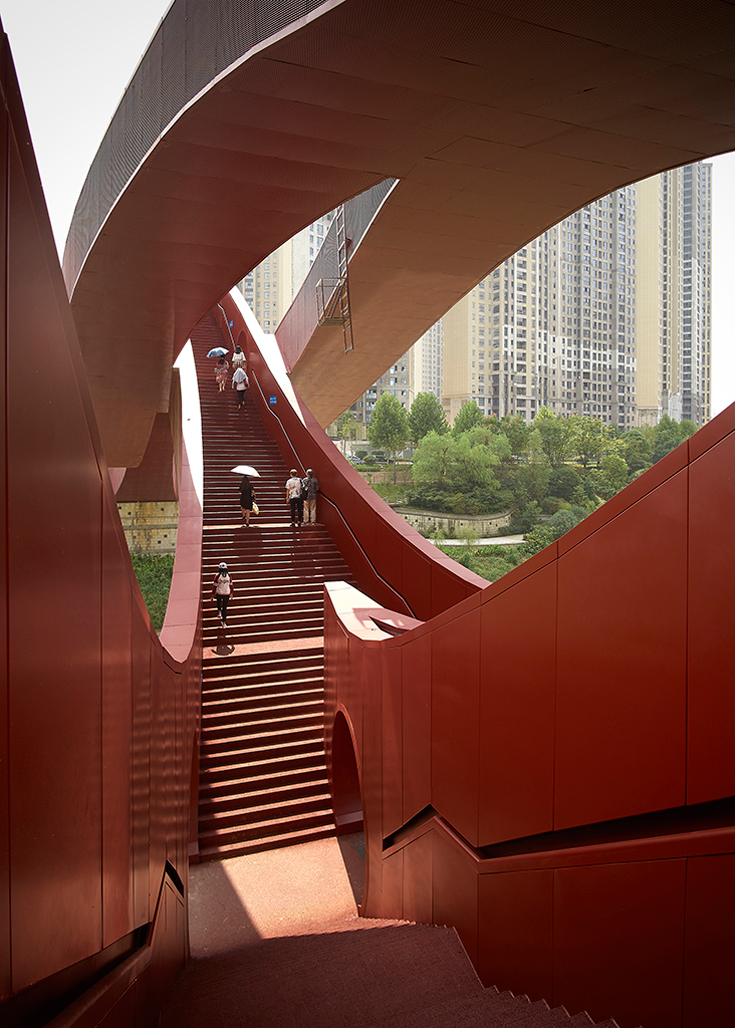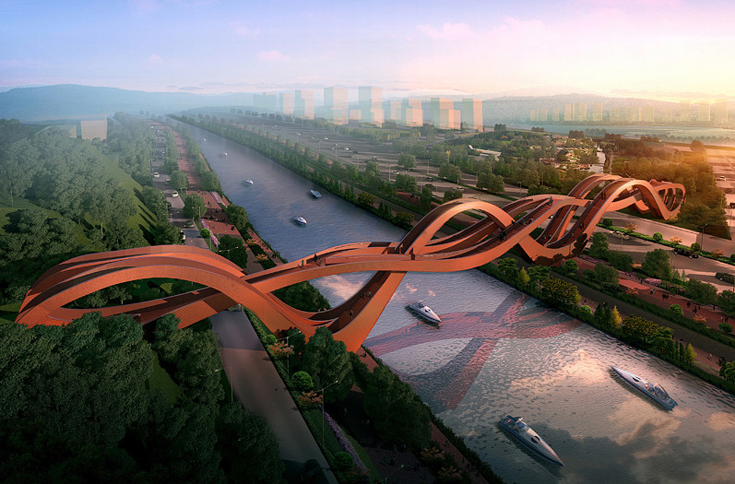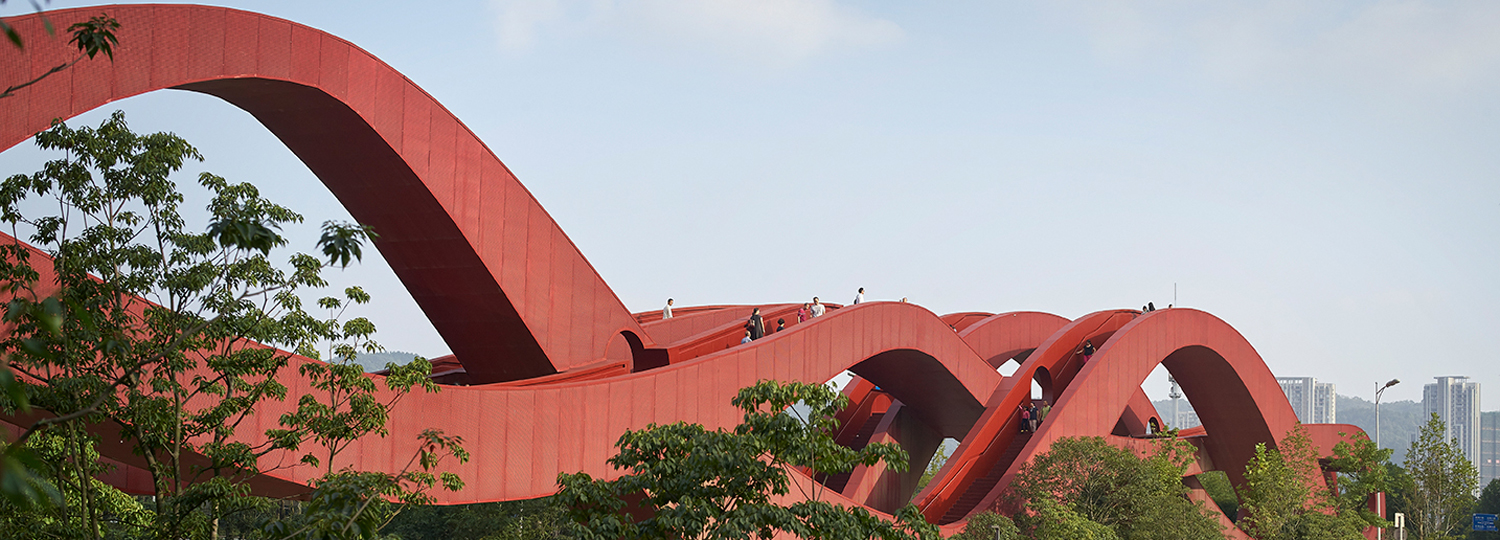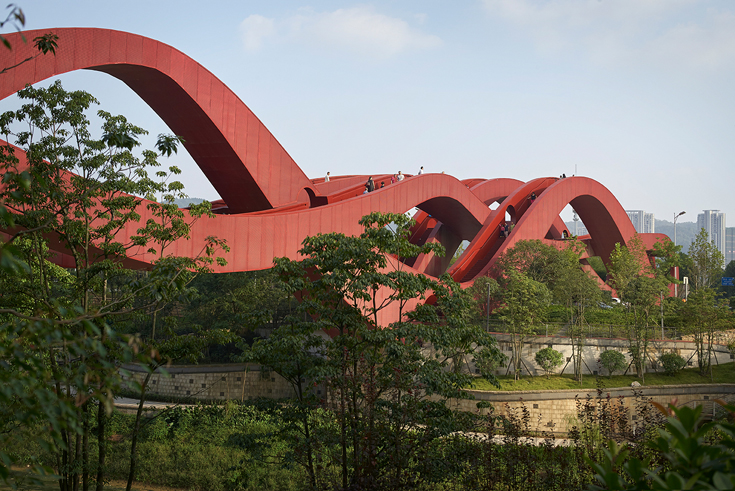Lucky Knot: New bridge by NEXT Architects

Photo: ©Julien Lanoo
The viaduct with the auspicious-sounding name is a pedestrian bridge in the Chinese megacity of Changsha. The steel structure measuring 185 metres in length and 24 metres in height fits in perfectly with the series of unusual bridges that characterise NEXT Architects' work. Like the others, the Lucky Knot Bridge interacts with its surroundings and provides new perspectives.
In 2013, after the Melkweg Bridge in Purmerend, Netherlands, had been completed, NEXT Architects were invited to participate in the international competition for the design of a new bridge over Dragon King Harbour River in Changsha's rapidly growing 'New Lake District'. The NEXT teams in The Netherlands and China joined forces on the task, coming up with the Lucky Knot Bridge as a result.
Now, a mere few weeks after its opening, the structure has already become an icon and was recently declared one of the most spectacular bridges ever by CNN. As the bridge is also the key project for developing the public spaces in the area, aspects such as recreation, ecology and tourist activities were taken into consideration in its design, which links several levels at different heights (the river banks, the road, a park set higher up and the interconnections between them).
The final shape of the bridge is the result, one that ties all these areas and aspects together in both literal and metaphorical terms. "The shape of the Lucky Knot was inspired by the principle of the Mobius ring, as well as by the Chinese knotting art. In the ancient decorative Chinese folk art, the knot symbolises luck and prosperity", states John van de Water, partner at NEXT Architects in Beijing.
In 2013, after the Melkweg Bridge in Purmerend, Netherlands, had been completed, NEXT Architects were invited to participate in the international competition for the design of a new bridge over Dragon King Harbour River in Changsha's rapidly growing 'New Lake District'. The NEXT teams in The Netherlands and China joined forces on the task, coming up with the Lucky Knot Bridge as a result.
Now, a mere few weeks after its opening, the structure has already become an icon and was recently declared one of the most spectacular bridges ever by CNN. As the bridge is also the key project for developing the public spaces in the area, aspects such as recreation, ecology and tourist activities were taken into consideration in its design, which links several levels at different heights (the river banks, the road, a park set higher up and the interconnections between them).
The final shape of the bridge is the result, one that ties all these areas and aspects together in both literal and metaphorical terms. "The shape of the Lucky Knot was inspired by the principle of the Mobius ring, as well as by the Chinese knotting art. In the ancient decorative Chinese folk art, the knot symbolises luck and prosperity", states John van de Water, partner at NEXT Architects in Beijing.




